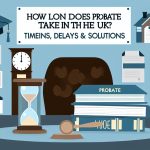Table of Contents

Key Takeaways
- Understanding UK probate and death deeds is crucial for a smooth asset transition after a loved one’s passing.
- Essential documents for probate include the death certificate, will, and an inventory of assets.
- Death deed templates can simplify the process, making it more efficient and cost-effective.
- There are clear steps to fill out a death deed template correctly, ensuring legal compliance.
- Addressing common challenges like debt, taxes, and family disputes early on can prevent complications.
Demystifying UK Probate for Quick Asset Transfer
When someone passes away, their assets don’t automatically transfer to their loved ones. Instead, there’s a legal process to follow, known as probate. This process can seem daunting, but it’s essentially about proving a will’s validity and ensuring assets are distributed according to the deceased’s wishes. If there’s no will, the rules of intestacy apply. Either way, you’ll need to get the right documents in order and follow specific steps to make sure everything goes smoothly.
The Essentials of Death Deed Templates
A death deed, also known as a deed of variation, is a powerful tool in the probate process. It allows beneficiaries to rearrange or redirect their inheritance to someone else. This can be for various reasons, like reducing inheritance tax or providing for someone not included in the will. It’s a legal document, so it’s important to get it right.
Streamlining Probate with a Step-by-Step Approach
Dealing with probate can be broken down into manageable steps. From gathering the necessary documents to filling out forms and dealing with financial institutions, a systematic approach can help you handle probate confidently and efficiently.
What is a Death Deed Template?
Defining Death Deed Templates
A death deed template is a pre-prepared form that guides you through the process of creating a deed of variation. It helps ensure all the legal requirements are met and that the deed accurately reflects the changes the beneficiaries want to make. It’s a template because it provides a standard format to follow, but the details will be unique to each situation.
Role in the Probate Process
Using a death deed template can be a game-changer in the probate process. It can save time and legal fees, and most importantly, it can help avoid disputes among family members by clearly documenting any changes to how assets are distributed. This is essential because it helps uphold the integrity of the deceased’s final wishes and ensures a fair distribution of the estate.
Preparing for Probate: Documents You’ll Need
Death Certificate
Before you can do anything with the deceased’s estate, you’ll need a death certificate. This is the official document that proves someone has passed away. You’ll need to present this when notifying banks, utility companies, and other institutions of the death. You’ll usually need several certified copies because each organization may require one.
Will
If the deceased left a will, it’s your roadmap for the probate process. The will should name an executor – that’s the person responsible for carrying out the instructions in the will. If you’re the executor, you have a legal duty to distribute the estate according to the will’s terms. If there’s no will, you’ll be following the rules of intestacy instead.
Asset Inventory
Next, you’ll need a detailed list of the deceased’s assets and debts. This includes everything from bank accounts to property, shares, and personal belongings. It also means identifying any debts, like mortgages or credit cards, that need to be paid off. This inventory is crucial because it forms the basis of the estate’s valuation.
Step-by-Step Guide to Using Death Deed Templates
Filling Out the Template: A Walkthrough
When you’re ready to use a death deed template, you’ll need to fill it out carefully. Start by listing the original beneficiaries and the new beneficiaries if assets are being redirected. You’ll also need to describe the assets in detail and explain how they’re being varied. Every beneficiary affected by the changes must agree and sign the deed.
Legal Considerations and Compliance
It’s important to note that a death deed must be completed within two years of the death. It also has to be done before the assets have been distributed. Besides that, you should always seek legal advice before finalizing a death deed to ensure it’s valid and won’t cause issues down the line.
Benefits of Using Death Deed Templates
Efficiency in the Probate Process
One of the biggest advantages of using a death deed template is the efficiency it brings to the probate process. Rather than starting from scratch, a template gives you a clear structure to work with, which can save precious time. Time is of the essence in probate matters, not only for the emotional well-being of the beneficiaries but also because certain aspects of estate management, like property sales, can be time-sensitive.
- Templates provide a clear and consistent format for changes to be documented.
- They help prevent misunderstandings by laying out terms in plain language.
- Templates can be quickly adapted to different situations, which is particularly useful when dealing with multiple beneficiaries or complex asset structures.
Additionally, by using a template, you can help ensure that all the necessary legal points are covered, which reduces the risk of the deed being challenged or invalidated later on.
Reducing Legal Expenses
Legal costs can mount quickly during the probate process, especially if you’re dealing with complex estates or disputes. By using a death deed template, you can cut down on these expenses significantly. A well-structured template can minimize the need for extensive legal consultation and can streamline the process of making any changes to the inheritance distribution.
For instance, if a beneficiary wants to redirect their inheritance to their children to reduce inheritance tax, a death deed template can make this process straightforward without the need for costly legal drafting.
However, it’s still wise to get the final document reviewed by a solicitor to ensure everything is in order. The cost of this review is typically much less than having a solicitor draft the entire document from scratch.
Tips for a Flawless Asset Transfer
- Double-check all details entered in the death deed template to ensure accuracy.
- Maintain open communication with all beneficiaries to prevent disputes.
- Consult with a solicitor to review the completed template for legal soundness.
Ensuring Correct Information
Accuracy is paramount when filling out a death deed template. A single mistake can lead to significant delays or legal challenges. Make sure you have all the correct details of the assets and the beneficiaries before you start. If you’re unsure about any information, it’s better to take the time to verify it than to make assumptions.
Communicating with Financial Institutions
Once the death deed is completed and all parties have agreed to the changes, you’ll need to communicate with banks, investment firms, and other financial institutions. Provide them with a copy of the death deed and the death certificate, and ensure they update their records accordingly. Clear communication can prevent any confusion or disputes with these institutions, which could otherwise delay the asset transfer process.
Addressing Common Probate Challenges
Dealing with Debt and Taxes
When you’re managing an estate, it’s not just about handing out heirlooms or transferring property titles. You’ve also got to tackle the less pleasant tasks, like sorting out any debts the deceased may have left behind. This could include anything from credit card bills to utility payments. And then there’s taxes. In the UK, there’s no escaping the taxman, even in death. You may need to deal with inheritance tax, which is due on estates valued over a certain threshold. It’s crucial to settle these debts and taxes before distributing the assets to avoid personal liability.
To make sure you’re doing everything above board, it’s a good idea to get a professional involved, like an accountant or tax advisor. They can help you figure out what’s owed and how to pay it. And remember, some assets, like jointly owned property or certain life insurance policies, might pass directly to beneficiaries without being part of the probate process.
Negotiating Family Disputes
It’s not uncommon for emotions to run high after someone passes away, and sometimes this can lead to disagreements over the estate. If you’re the executor, it’s part of your job to try and mediate these disputes, ideally before they blow up into full-blown legal battles. Clear communication is key here. Keep everyone in the loop about what’s happening and why. If disputes do arise, consider involving a mediator to help find a resolution everyone can live with.
Frequently Asked Questions (FAQ)
Can Death Deed Templates Be Used for All Assets?
Mostly, yes. Death deed templates can be used for a wide range of assets, including money, property, and shares. However, some assets might be trickier, like those held in trust or certain pension schemes. For these, it’s best to get specific advice to make sure you’re handling them correctly.
What Happens if Information in the Template is Incorrect?
If there’s a mistake in the death deed template, it can cause delays or even disputes down the line. That’s why it’s so important to double-check everything before you submit it. If you do spot an error after the deed has been processed, you’ll likely need to go through a formal amendment process, which can be both time-consuming and costly.
Do Death Deed Templates Replace the Need for a Will?
No, a death deed template doesn’t replace a will. A will is a document that outlines the deceased’s wishes for their entire estate, while a death deed template is used to make changes to the distribution of assets after the will has been executed. It’s an amendment, not a replacement.
How Do You Update a Death Deed Template?
If you need to update a death deed template, it’s essential to get it right to avoid any legal complications. You’ll usually need the agreement of all beneficiaries affected by the changes. It’s often best to consult a solicitor to make sure the updated deed complies with all legal requirements.






